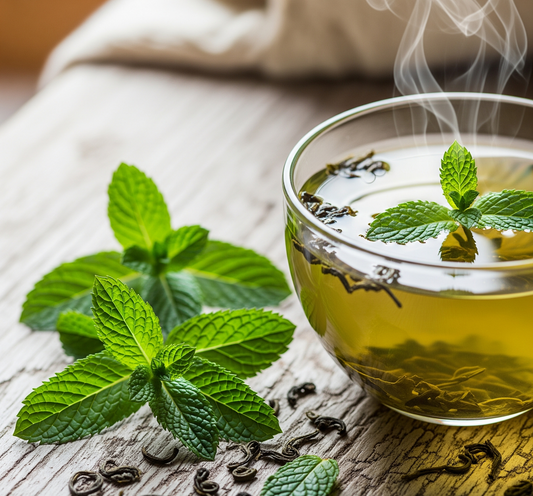The first sip of a perfectly brewed tea can be a revelation. But have you ever noticed subtle variations in taste throughout the year? These shifts aren't random; they're a story whispered by the tea leaves themselves. There's a hidden language that your tea leaves speak through its "flushes"; the timing of harvest.
Let’s uncover the unique characteristics of first flush and second flush teas, and the difference these same leaves harvested during different times of the year can have in your cup of tea.
Origin of Flushes
When the British love for black tea soared in the 1800s, their government actively promoted its growth and processing in India, their colony at the time. This led to the birth of tea plantations and the entire tea industry in Darjeeling. Hence, the term "flush" finds its origins in the British colonial era and the burgeoning tea industry in regions such as India, Sri Lanka, and later Nepal. Originating during the British colonization of India, particularly in places like Darjeeling and Assam, "flush" was most likely borrowed from gardening or agricultural terminology, denoting a period of vigorous growth or blossoming.
 Specifically, in tea cultivation, "flush" refers to the new growth or young shoots of the Camellia sinensis plant, which are plucked for processing. Historically, the term flush has been used most for teas originating in Darjeeling. To be more precise, first flush was known to refer to the lighter varieties of black tea that have established Darjeeling as the most renowned tea-producing region globally.
Specifically, in tea cultivation, "flush" refers to the new growth or young shoots of the Camellia sinensis plant, which are plucked for processing. Historically, the term flush has been used most for teas originating in Darjeeling. To be more precise, first flush was known to refer to the lighter varieties of black tea that have established Darjeeling as the most renowned tea-producing region globally.
But there are first flush versions in each culture and region. For example, the tea harvested in spring is called Shincha in Japan. Shin means new and cha means tea. Similarly spring teas are called Tóu Chūn in China. These teas are made from leaves plucked specifically between Qing Ming and Gu Yu marking the beginning of the warmer temperature and the onset of the rainy season.
Tea Flushes in Nepal
While Nepal, unlike Darjeeling, is an entire country with different topographical and geographical features, its myriad teas, due to its nascent tea history, are all lumped under one name. The country, though small in size, has different regions (each with its unique climatic conditions) from which teas are produced. There hasn’t been enough documentation to separate each region’s unique characteristics yet. Teas that grow anywhere in Nepal from Jhapa to Solukhumbu are all called Nepali teas. But when talking about orthodox teas and different flushes from Nepal, people are referring to the Eastern regions of Nepal like Ilam, Panchthar, and even Kanyam where the climate favors the flavors.
 Teas from Eastern Nepal come from a region encompassing the Siwalik Hills. Additionally, the Sandakphu range also plays a significant role in influencing precipitation patterns in the region. These geographical and geological factors contribute to the distinctive quality and flavor of teas produced in Eastern Nepal. These geological attributes have led to nuanced changes in the tea notes and have made Nepali first and second flush teas an even rarer delicacy.
Teas from Eastern Nepal come from a region encompassing the Siwalik Hills. Additionally, the Sandakphu range also plays a significant role in influencing precipitation patterns in the region. These geographical and geological factors contribute to the distinctive quality and flavor of teas produced in Eastern Nepal. These geological attributes have led to nuanced changes in the tea notes and have made Nepali first and second flush teas an even rarer delicacy.
You can read an elaborate blog on the Nepali First Flush here: Everything you need to know about Nepali First Flush Tea
First Flush Tea: The Champagne of Teas
 First flush teas are harvested in the spring, typically from late February to early April. These teas are known for their delicate and light flavors, often described as floral, fruity, and brisk. The leaves used for first flush teas are the very first tender shoots of the season, which have a high concentration of flavor compounds due to the period of dormancy during the winter months.
First flush teas are harvested in the spring, typically from late February to early April. These teas are known for their delicate and light flavors, often described as floral, fruity, and brisk. The leaves used for first flush teas are the very first tender shoots of the season, which have a high concentration of flavor compounds due to the period of dormancy during the winter months.
Characteristics of First Flush Teas
- Light and delicate flavor
- Floral and fruity notes
- Bright and clear liquor
- Astringent and brisk taste
- Often referred to as the "Champagne of Teas"
First flush teas are so highly sought after that entire villages seemingly hold their breath for that perfect leaf to bloom. Tea makers leave their phones and distractions at home, for all their attention is devoted to the prize—the coveted first flush. Many estates, including KTERC, begin with puja ceremonies that seek blessings from the divine. The first flush is a community affair. Tea pluckers and workers don’t rest until the best, most delicate leaves are selected and under their care. Tea makers like Sharad Subba and Sonam Lama take in kilograms upon kilograms of tea leaves and handpick the best of the leaves to produce the first flush teas in grams.
Second Flush Tea: Fuller Taste
 Second flush teas are harvested in late spring and early summer, typically from May to June. These teas are known for their robust flavor, thanks to the later harvest time in the season. These mature leaves have absorbed more nutrients and basked in consistent sunlight, leading to a unique taste profile. Warmer temperatures also play a role, influencing the final brew.
Second flush teas are harvested in late spring and early summer, typically from May to June. These teas are known for their robust flavor, thanks to the later harvest time in the season. These mature leaves have absorbed more nutrients and basked in consistent sunlight, leading to a unique taste profile. Warmer temperatures also play a role, influencing the final brew.
Interestingly, some pests like thrips induce the plant's defense mechanisms, ultimately contributing to a richer sensory experience. Second flush teas are generally full-bodied due to higher levels of tannins. These tannins balance out the fruity notes, creating a well-rounded flavor.
Eastern Nepal’s altitude between 600 to 2,000 meters above sea level, adds another layer of complexity to the taste. Tea growing regions like Ilam, Panchthar and Kanyam benefit from optimal climatic conditions for tea cultivation, including moderate temperatures, abundant rainfall, and well-drained soil rich in nutrients. The unique terroir influenced by its mountainous terrain and proximity to the Himalayas, imparts distinct characteristics to the tea, including floral notes, a brisk mouthfeel, and a subtle sweetness. making these teas highly sought after by tea connoisseurs.
Characteristics of Second Flush Teas
- Rich and mature flavor
- Muscatel notes, often described as a grape-like sweetness
- Amber-colored liquor
- Less astringent and more rounded taste compared to first flush teas
You can read an elaborate blog about Nepali Second Flush Black tea here: A Deep Dive Into The World Of Second Flush Tea
Which One is Better? First Flush vs Second Flush
The preference for first flush vs second flush tea ultimately comes down to personal taste. While many tea connoisseurs prefer the delicate and refreshing nature of first flush teas, there are those who consider first flush to be a rather unfinished lot of teas. After all, there are stronger, fuller and more mature flavors to be gleaned in from second flush teas. Both types of tea have their own unique charm and are a testament to the diverse and nuanced world of tea.
It completely depends on your taste bud and what's available on the market. Nepali first flush teas like our First Flush '25 and Second Flush Black teas at Nepal Tea Collective are known to be out of the shelf quicker than lightning after all.
FAQs about First Flush vs Second Flush
What is the difference between first flush tea and second flush tea?
First flush tea is harvested in early spring and is known for its light, floral, and delicate flavors. Second flush tea, harvested in late spring to early summer, has a fuller, more robust taste with muscatel notes.
Which is better: first flush or second flush tea?
It depends on personal preference. If you enjoy a lighter, more delicate tea, go for first flush. If you prefer a richer, more mature flavor, a second flush is ideal.
Why is first flush tea called the Champagne of Teas?
First flush tea is called the Champagne of Teas due to its exquisite and delicate flavor profile, much like the luxury and refinement associated with champagne.
What are the unique characteristics of second flush tea?
Second flush tea is known for its muscatel notes, amber-colored liquor, and balanced, full-bodied taste with reduced astringency.
Where can I buy Nepali first flush and second flush teas?
You can find high-quality first flush and second flush teas at Nepal Tea Collective, renowned for their authentic and rare selections.
About the Author
Nishchal Banskota is the founder of Nepal Tea Collective, dedicated to offering the finest Nepali teas. With years of experience in the tea industry, Nishchal is passionate about sharing the culture and craftsmanship of Nepali tea with the global tea industry. Learn more about Nepal Tea Collective and explore a variety of award-winning teas that bring you closer to the heart of Nepal.




